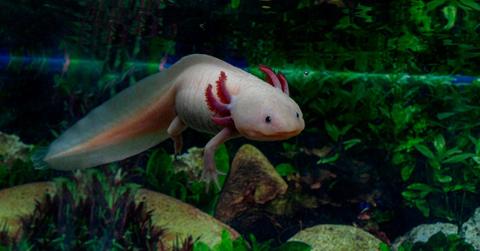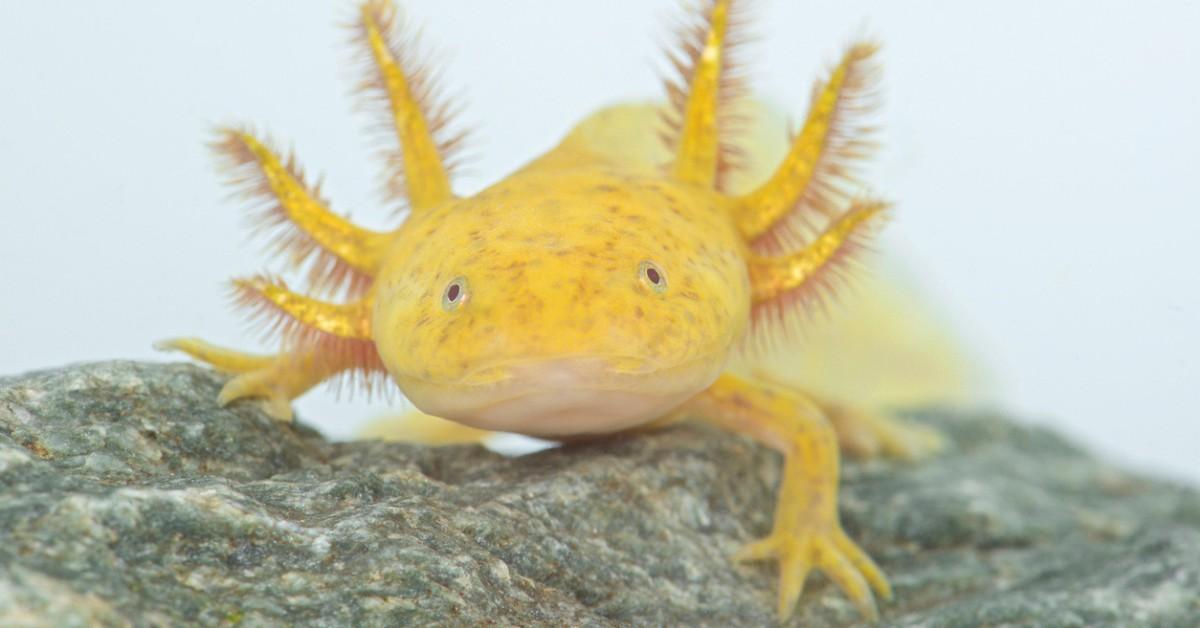Axolotl Populations Are Dwindling — What You Need To Know About the Critically Endangered Amphibian
These freshwater amphibians are rarely seen in the wild.
Published Nov. 12 2024, 1:40 p.m. ET

For years, axolotls swam in the freshwaters of Lake Chalco and Lake Xochimilco in Mexico. The amphibians, which are part of the salamander family, were so abundant in the area that they even played a major role in the region's culture.
However, after decades of overfishing and other human-led issues, the population has dwindled so much that the creatures have been added onto the critically endangered list.
According to scientists, that's bad news, not only for the amphibians and those who have cherished them due to their regional spiritual and religious significance for centuries, but also for the humans who have come to fall in love with the adorable creatures.
Keep reading to learn more about axolotls, including why they're so biologically important to the ecosystems they call home.

Critically endangered, why are axolotls so important — and how many are left?
Also known as the Mexican walking fish, the axolotl's ability to regenerate missing body parts has fascinated scientists for years. Experts have long studied the amphibian to try to learn more about the human body, according to the Zurich Group, which extends to understanding some of the mysteries surrounding certain birth defects like spina bifida.
But, with the last remaining wild axolotls dwindling at such a rapid pace, scientists fear the answers to some of their most basic questions will disappear along with them. That's because captive axolotls are more likely to be infected with diseases and to suffer from complications from being bred in captivity.
And the scientific loss isn't all that we stand to experience once the last of the wild axolotls dies. The salamander also plays a very important role in maintaining the biodiversity of the waters they call home.
That's something that will likely happen sooner rather than later since CNN reports that there are likely fewer than 100 mature axolotls left.
How did the axolotl become endangered?
Knowing just how beloved the amphibians have been for generations, it may be hard to understand how they could've become endangered. To find out why, all you have to do is look at the pollution that has taken over their native waterways.
The lakes and canals around Mexico City have become inhospitable to the salamanders over the years.
Between water pollution and the introduction of non-native species, the axolotl has struggled to survive.
And modern issues aren't the only problem the tiny creatures have faced. According to Vox, the trouble started way back around the early 1500s when the Spanish came to Mexico. The colonization process saw local farmlands destroyed as they introduced new agricultural materials to the area, polluting the waters.
In fact, things got so bad in the area that Vox notes that there aren't too many native species left that can survive in the waters of Xochimilco.
Of course, that only makes it easier for non-native species to continue decimating the salamander's numbers.
While all of this is incredibly sad for so many reasons, it's not without hope.
In November 2023 advocates began working on a plan to help keep axolotls in their native waterways and out of the aquariums where the majority of the population has been forced to live.
Started by The National Autonomous University of Mexico, folks can adopt an axolotl (virtually, of course) in exchange for providing funds to help support the species.
While it doesn't appear that the organization has done the same again in 2024, there's always a chance that they once again take up a collection to try and save these happy looking critters from complete extinction while they still can.